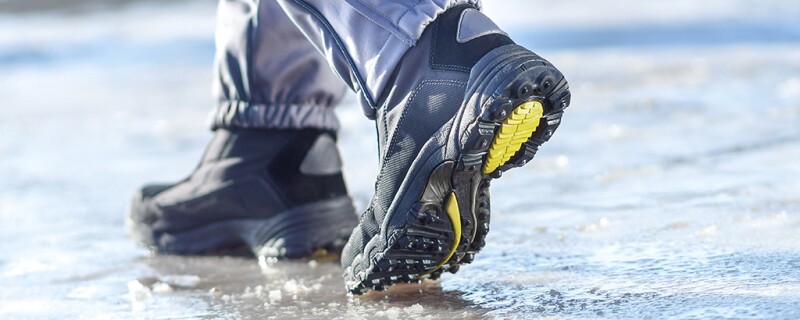Did you know that falls are a leading cause of injury and death in the U.S.?
More than 9 million people are seen by medical providers each year for slip and fall accidents and related injuries, and one-fifth of falls cause serious bodily harm like a broken bone or head injury. Sadly, most are preventable and could have been avoided with proper preparation and training.
During winter weather conditions, the stakes are even higher with wet floors and icy surfaces. Businesses can help prevent slip and falls on two fronts—for associates and customers.
Fall prevention for employees
Proper footwear
Require associates to wear shoes or boots designed to provide traction on wet, slippery surfaces. Like other tools of the trade, slip resistant treads are vital equipment.
Take things slow
Encourage the use of slow, short steps to help people maintain their balance when walking on ice or other slippery footing. Carrying equipment or materials can be especially dangerous as it affects a person’s center of gravity.
Aim for three points of contact in the parking lot
Encourage employees to use their vehicles for support as they get in and out, making sure they have three points of contact as they shift their balance and tentatively test footing before exiting the vehicle
Fall prevention for customers
Secure a reliable snow removal company early
Before the snow flies, secure a contract with a snow removal company to keep parking lots and sidewalks clear. Outline what services are and are not included, and plan supplemental checks of walkways and entrances.
Stock up on supplies
Make sure you have an adequate supply of snow and ice removal tools and surface treatments on hand throughout the winter (shovels, salt, sand, deicer, etc.). Train employees how to safely use them and make it a part of daily responsibilities as weather conditions warrant.
Use mats or slip-resistant floor treatments
Place quality, beveled edge mats in walking areas where snow and water accumulate such as exterior doors. Change mats regularly to ensure those in place are dry and serviceable. Consider applying a slip-resistant floor treatment for larger surface areas, like shop floors.
Direct foot traffic
Whether they are walking on a work site, a side walk, or an entryway, encourage people to walk on designated pathways as much as possible. Shortcuts over snow piles, uneven areas, or spots where ice tends to form increase the risk of falls.
Fall prevention best practices for everyone
Maintain proper lighting
Black ice is tough to spot because the thin, transparent layers of ice look like the surface it covers. Still, it’s simple to shed light on other slippery conditions like snow, slush, and even muddy areas. Lighting is especially important where there are elevation changes such as a flight of stairs or a step leading into a building. Temporary lighting is important for worksites, as well. For specific recommendations on lighting, refer to OSHA’s guidelines on illumination.
Encourage exercise and a healthy lifestyle
Falls can be caused by a combination of factors, including a person’s health and overall wellness. Age, dehydration, chronic pain, medication, weakened muscles, and a host of other physical conditions can contribute to a fall. Maintain a healthy lifestyle and encourage others to do the same.
For more safety tips for your business, visit our business blog.





